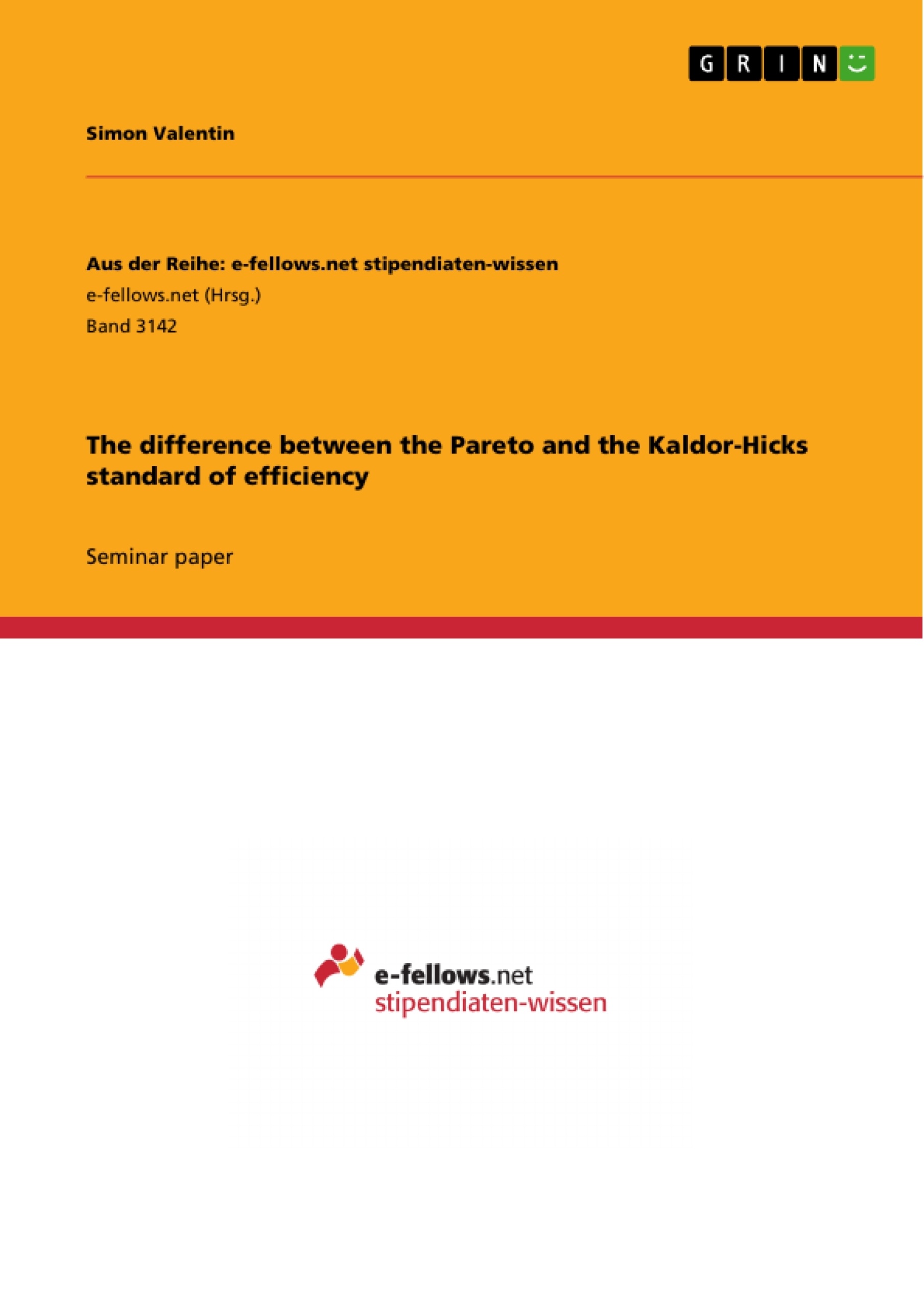In this essay, I will first describe the Pareto and the Kaldor-Hicks standard of efficiency. I will then elaborate on the relationship and the differences between the two concepts and finally investigate how the acceptance and application of the two standards shape evaluation and justification in state action.
Table of Contents
- Introduction
- Pareto Efficiency
- Objective 1
- Objective 2
- Kaldor-Hicks Efficiency
- Comparison
- Use as justification for state action
Objectives and Key Themes
This essay aims to comprehensively explore the concepts of Pareto and Kaldor-Hicks efficiency. It delves into their definitions, analyzes their differences and similarities, and investigates how these concepts shape the evaluation and justification of state action.
- Pareto Efficiency and its limitations as a welfare criterion
- Kaldor-Hicks Efficiency and its potential for compensation
- Comparison of the two concepts and their applicability
- Use of Pareto and Kaldor-Hicks principles in justifying state action
- Ethical considerations and limitations of using efficiency criteria
Chapter Summaries
The introductory chapter sets the stage for the essay by outlining its scope and objectives. It defines Pareto efficiency as a state where it's impossible to improve one aspect without worsening another. The chapter highlights the challenges of using Pareto efficiency as a welfare criterion, as it doesn't allow for comparing different Pareto optima or accommodating non-win-win scenarios.
Moving on, the essay delves into the Kaldor-Hicks criterion, a welfare standard built on the idea of potential compensation for reallocation. It emphasizes that Kaldor-Hicks extends the applicability of Pareto efficiency by incorporating the principle of compensation. The chapter outlines the core concept that if potential winners can compensate potential losers, the redistribution accompanied by compensation can be considered welfare-enhancing.
The comparison section highlights the similarities and differences between the two concepts. It establishes that while each Kaldor-Hicks optimum is also a Pareto optimum, the reverse isn't necessarily true.
The final section explores the use of Pareto and Kaldor-Hicks principles in justifying state action. It acknowledges the increasing relevance of economic principles in public spheres and argues that these concepts are often employed to justify state action without engaging in normative discussions. The chapter analyzes the limitations of both approaches, emphasizing that neither concept fully captures the complexities of societal welfare and ethical considerations.
Keywords
The main keywords and focus topics of the text are: Pareto efficiency, Kaldor-Hicks efficiency, welfare economics, state action, cost-benefit analysis, normative ethics, economic imperialism, Coase theorem, distributive effects, social welfare, and societal optimality.
- Citation du texte
- Simon Valentin (Auteur), 2018, The difference between the Pareto and the Kaldor-Hicks standard of efficiency, Munich, GRIN Verlag, https://www.grin.com/document/491913




